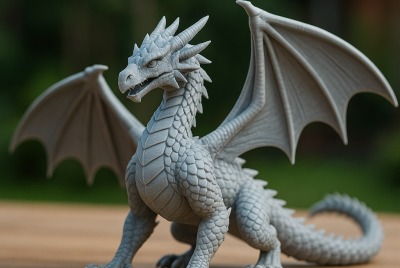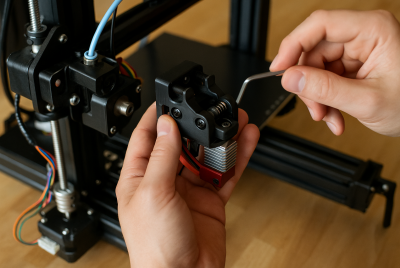Best 3d Print Tools for Quality Prints & Easy Upgrades
If you’ve spent even a little time with a 3D printer, you know that 3d print tools can make or break your results. Quality prints depend on more than just the machine and filament—you need a toolkit that helps you troubleshoot, fine-tune, and maintain your setup. Whether you’re a hobbyist printing for fun or a maker producing prototypes, investing in high-quality 3d print tools leads to smoother workflows, better prints, and fewer frustrating failures.
As the 3D printing community keeps growing, more enthusiasts are sharing their must-haves and clever hacks. There are so many tool choices that it can get confusing which one to go for. Let’s break down the essential tools and find out what makes each pick stand out.
Essential 3d Print Tools Every Enthusiast Needs
One of the best decisions that 3D printing enthusiast can make is to collect the right toolset. The correct tools enable you to produce work of a higher caliber and with greater inventiveness. These ten essential 3D printing tools will soon become your go-to resources for each step of the procedure:
1. Precision Calipers
Accurate measuring is the foundation of successful 3D printing. A pair of digital calipers allows you to check filament diameter, confirm the size of your finished prints, and even measure tricky internal elements. With accurate measurements down to 0.01mm, you can remove guessing and ensure that every item fits perfectly—no more surprises when your model clicks into place.
2. Nozzle Cleaning Kits
A clogged nozzle can instantly ruin a print and your mood. That’s why a good cleaning kit—complete with needles and small wire brushes—belongs in every printer owner’s drawer. Regular maintenance with these tools keeps filament flowing, prevents jams, and extends the life of your hotend, so your printer runs smoothly with every project.
3. Bed Leveling Tools
A level print bed is the secret to perfect first layers and fewer failed prints. While some still swear by the paper method, using a feeler gauge or an auto-leveling sensor saves time and improves consistency. A flat bed means your prints stick better, layers stay even, and you spend less time troubleshooting.
4. Spatula and Removal Tools
There’s nothing worse than damaging a finished print while trying to get it off the bed. Flexible spatulas, scrapers, or removal tools slide under models without scratching surfaces or snapping fragile parts. Stainless steel or sturdy plastic blades with a comfortable grip are best, giving you safe, effortless removal every time.
5. Filament Dry Boxes
Moisture is the silent enemy of good prints. Even a little humidity can make filament brittle, stringy, or clog-prone. Filament dry boxes keep your spools in optimal condition, preventing print defects and extending the shelf life of even the most sensitive materials—like nylon and TPU.

6. Digital Thermometers
Is your printer really at the temperature it claims? With an infrared digital thermometer, you can quickly check your heated bed and hotend to confirm accuracy. Spotting discrepancies early keeps your printer dialed in and reduces temperature-related print failures.
7. Needle File Sets
Even the best prints often need a little cleanup. Needle files come in a variety of shapes and sizes, perfect for smoothing rough edges, cleaning up holes, or refining fine details. These files transform a good print into a professional-looking part, especially for functional models or miniatures.
8. Deburring Tools
Rough edges and leftover filament are common, especially on supports or cutouts. A deburring tool lets you quickly shave away sharp corners or imperfections, leaving a smooth, safe finish. This tool is essential for anyone who values a polished look and comfortable handling.
9. Tweezers
Not all tasks require heavy tools—sometimes, a simple pair of fine-tipped tweezers makes all the difference. Tweezers are great for plucking away stray filament, removing supports from tight spaces, or cleaning small gaps and crevices after a print. Keep a set handy and you’ll wonder how you managed without them.
10. Side Cutters/Flush Cutters
Clean cuts matter, especially when prepping filament or removing support material. Side cutters (also called flush cutters) are perfect for trimming filament to prevent jams, cutting away support structures, and removing brims or rafts. Quality cutters leave a neat edge and make post-processing quick and safe.
Equipping your workspace with these tools means fewer print fails, better results, and a far more enjoyable 3D printing experience. As you gain experience, you’ll likely add other specialty tools—but these 10 basics will serve you well on every project.
You might also enjoy our comprehensive guide on 3D Printer Accessories, which dives deeper into essential tools like nozzle cleaning kits, filament dryers, calipers, and more—perfect for enhancing your toolkit.
How the Right Tools Improve Print Quality
You might be surprised how much difference a well-stocked toolkit makes. Not only do these 3d print tools help prevent common problems, but they also unlock better results with less effort. For example, regularly cleaning your nozzle means fewer failed prints and a longer-lasting hotend. Using calipers to check filament width ensures more consistent extrusion and accurate prints. Bed leveling tools cut down on adhesion issues, and filament dry boxes eliminate one of the most common causes of stringing and brittleness.
And let’s not forget the satisfaction of clean, finished models—needle files and spatulas are your friends for turning a good print into a great one. Want to put your new tools to the test? Check out our guide to 3D-printed planters for inspiration and hands-on projects you can try right away.
The Importance of Calibration and Bed Leveling in 3D Printing
Consistent, high-quality 3D prints depend heavily on proper calibration and bed leveling. According to this study on 3D printing optimization and calibration, systematic calibration, including precise nozzle and bed adjustments, significantly improves both dimensional accuracy and surface finish.
Further, a systematic review of 3D printing challenges highlights that uneven build plates and mechanical misalignments often lead to layer inconsistencies and poor adhesion. Investing in the right tools for calibration and bed leveling isn’t just convenient—it’s essential for reliable and professional results.
Conclusion
Every 3D printing journey is a mix of creativity, experimentation, and problem-solving. With the right 3d print tools in your corner, you’re ready to tackle any challenge that comes your way. Whether it’s improving print accuracy, preventing clogs, or achieving that perfect finish, a thoughtful toolkit makes the process smoother and more rewarding. Ready to upgrade your setup? Start with the essentials on this list, and you’ll see just how far your results—and your satisfaction—can go.
FAQs
Q1: Do I need every tool on this list to get started with 3D printing?
No, but starting with a few basics—like calipers, a spatula, and a nozzle cleaning kit—will solve most beginner headaches. You can always add more as your skills and projects grow.
Q2: How regularly should you clean your 3D printer’s nozzle?
It depends on your usage, but most users benefit from cleaning after every 5–10 prints or when changing filament types.
Q3: Are expensive 3d print tools always better?
Not necessarily. Many affordable brands deliver great results. Focus on tools with solid user reviews and reliable performance.
Q4: Can these tools help with troubleshooting print failures?
Absolutely. Many issues—like bed adhesion, layer shifting, and stringing—are much easier to fix with the right equipment on hand.
Q5: When should I replace my 3d print tools?
Replace tools if they become worn, damaged, or no longer work accurately to ensure consistent print quality.














